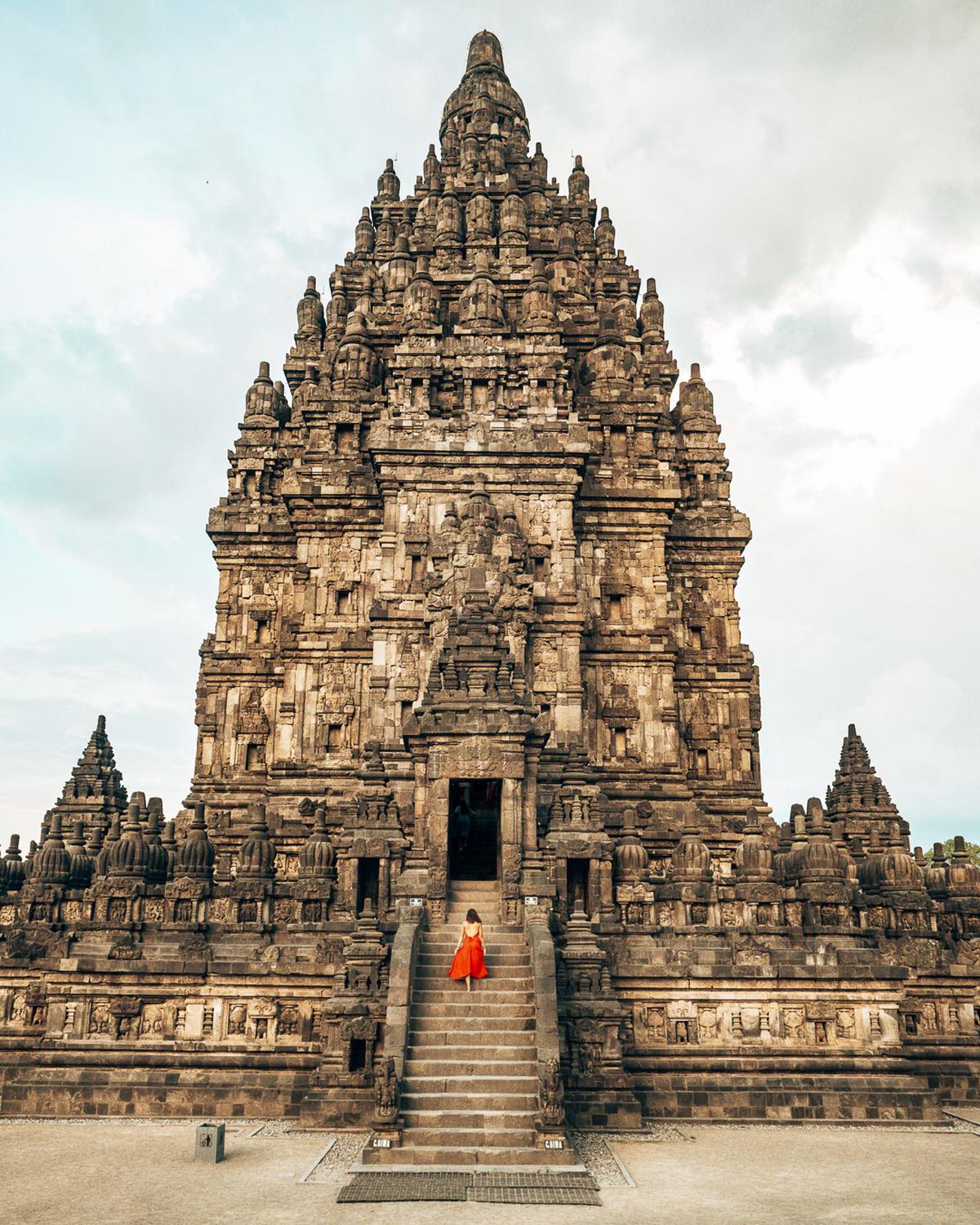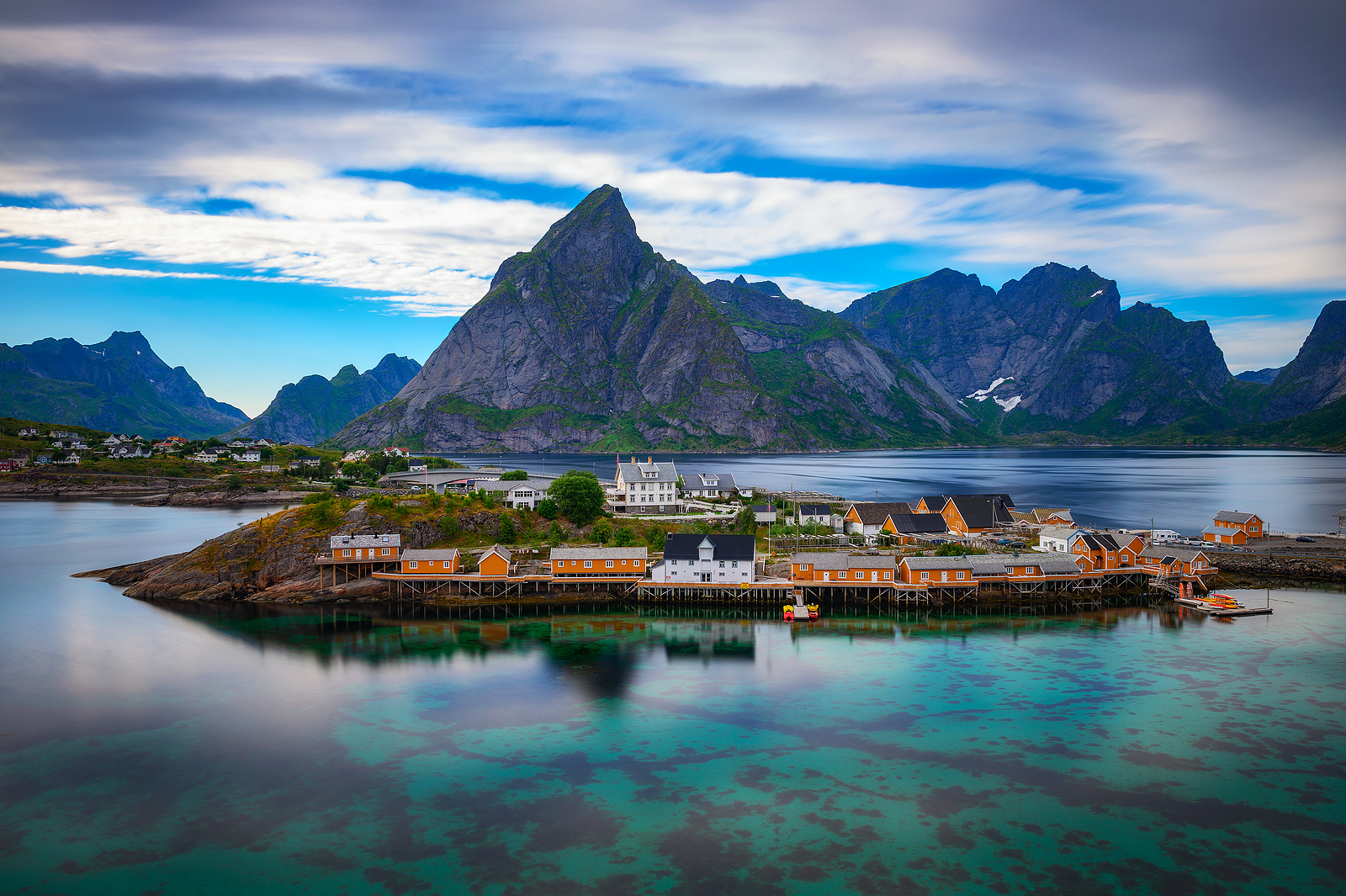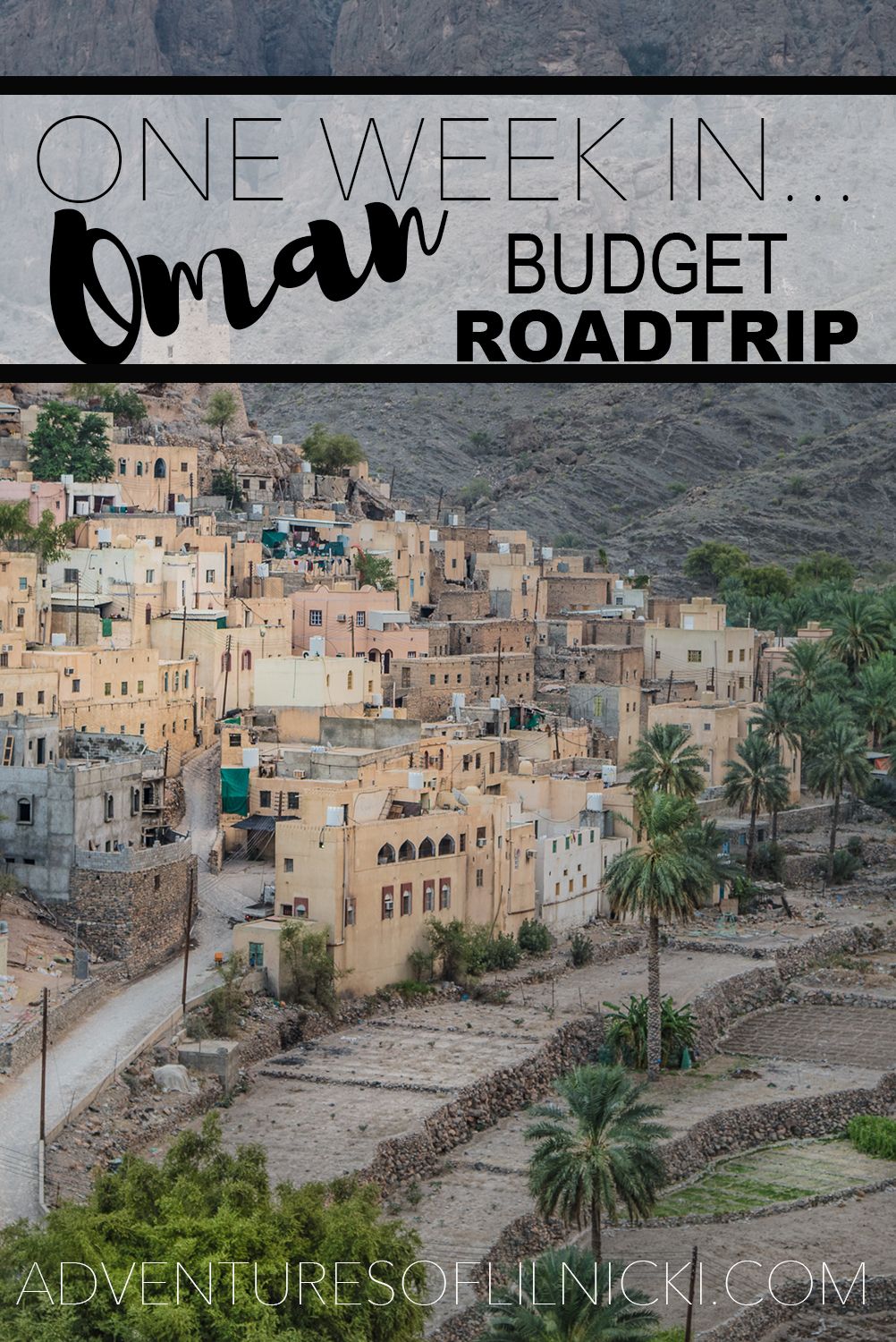
The air hums with the whispers of ancient stories as you approach Prambanan, a monumental testament to Java’s rich Hindu heritage. Rising majestically against the tropical sky, these towering spires, intricately carved with celestial beings and epic tales, beckon you to step into a bygone era of kings, gods, and devotion. Prambanan Temple, a UNESCO World Heritage site, is not merely a collection of stone structures; it’s a living monument, a vibrant cultural experience, and an essential stop for anyone venturing to Yogyakarta, Indonesia.
This comprehensive guide will equip you with everything you need to know to embark on an unforgettable journey to Prambanan, from understanding its captivating history to navigating its hallowed grounds and beyond.
A Symphony in Stone: The History of Prambanan Temple
Related Articles about Stepping Back in Time: A Comprehensive Guide to Visiting Prambanan Temple:
- Hungary: A Tapestry of History, Culture, and Unforgettable Experiences
- Seoul: A Metropolis Where Ancient Echoes Meet Futuristic Dreams
- España: A Tapestry of Sun, History, and Unforgettable Flavors – Your Ultimate Travel Guide
- An Odyssey into the Wild: How to Visit Serengeti National Park
- A Tapestry of Time and Beauty: Unveiling the Best Tourist Attractions in the Czech Republic
The story of Prambanan is as grand as its architecture. Construction of this colossal Hindu temple complex began in the mid-9th century during the reign of Rakai Pikatan of the Mataram Kingdom. It was a period of religious flux in Java, with Buddhism and Hinduism coexisting and, at times, competing for influence. Prambanan, dedicated to the Trimurti – Brahma the Creator, Vishnu the Preserver, and Shiva the Destroyer – stands as a magnificent expression of Hindu devotion and artistic prowess.
Legend intertwines with historical fact in the temple’s origin. The most popular tale tells of the brave prince Bandung Bondowoso who, smitten by the beauty of Princess Loro Jonggrang, was challenged to build a thousand temples in a single night to win her hand. While he was close to achieving this impossible feat, the princess, fearing his dark magic, orchestrated a ploy to awaken the village roosters prematurely, thus tricking him into believing his task was incomplete. Enraged, Bandung Bondowoso cursed the princess, transforming her into a stone statue, which is said to be the statue of Durga in the main Shiva temple.
Though the legends add a touch of mystique, the historical significance of Prambanan is undeniable. It served as the state temple of the Mataram Kingdom and a center of religious and cultural life for centuries. However, by the 10th century, the kingdom’s capital shifted to East Java, and Prambanan gradually fell into disuse and was eventually damaged by earthquakes and volcanic eruptions. Much of the complex lay in ruins for centuries, a forgotten relic of its former glory.
The arduous task of restoration began in the early 20th century under Dutch colonial rule and has continued to this day. The painstaking reconstruction, piecing together fragmented stones and deciphering ancient inscriptions, has brought back to life the breathtaking beauty and spiritual essence of Prambanan, allowing us to marvel at its grandeur once more.
Unveiling the Marvels: Main Attractions Within Prambanan Temple
Prambanan is a sprawling complex, and while the central Shiva temple is the undisputed star, each of the remaining structures holds its own unique charm and historical significance.
-
The Trimurti Temples: These three towering temples are the heart of Prambanan.
- Shiva Temple (Loro Jonggrang Temple): The tallest and most magnificent of them all, standing at an impressive 47 meters. Its interior houses a statue of Shiva, and the reliefs adorning its walls narrate the Ramayana epic in exquisite detail. The statue of Durga, believed to be Princess Loro Jonggrang, is also found within.
- Brahma Temple: Located to the north of the Shiva temple, this structure is dedicated to Brahma. It contains a statue of Brahma seated on a swan.
- Vishnu Temple: Situated to the south of the Shiva temple, this temple honors Vishnu and features a statue of Vishnu riding a Garuda.
-
The Apit Temples: Flanking the Trimurti temples are two smaller temples, known as Apit temples. These were likely dedicated to their respective mounts, Nandi (Shiva’s bull) and Hamsa (Brahma’s swan), and Garuda (Vishnu’s eagle).
-
The Garuda Temple: While not as grand as the Trimurti temples, the Garuda temple is noteworthy for its reliefs depicting the story of Rama’s search for Sita.
-
The Perwara Temples: Surrounding the central temples are rows of smaller, subsidiary temples known as Perwara temples. While many of these are in ruins, they offer a glimpse into the scale and organization of the original complex. Some of these have been partially reconstructed.
-
The Ramayana Reliefs: Perhaps the most captivating feature of Prambanan is the series of bas-reliefs that adorn the outer walls of the Shiva temple. These intricately carved panels meticulously depict the entire Ramayana epic, from Rama’s exile to the battle with Ravana. Walking along these walls is like reading an ancient comic book, a visual narrative that has captivated viewers for centuries.
-
The Museum: Located near the entrance, the Prambanan Museum houses artifacts unearthed during excavations and restoration, offering a deeper understanding of the temple’s history and the civilization that built it.
Essential Travel Tips for Your Prambanan Adventure
To make your visit to Prambanan as smooth and enjoyable as possible, keep these practical tips in mind:
- Dress Modestly and Respectfully: Prambanan is a sacred site. Wear clothing that covers your shoulders and knees. Scarves are available for rent at the entrance if needed.
- Comfortable Footwear is Key: You’ll be doing a lot of walking and climbing stairs. Opt for comfortable walking shoes or sandals.
- Stay Hydrated: The tropical climate can be hot and humid. Carry plenty of water, or purchase it from vendors around the complex.
- Sun Protection: A hat, sunglasses, and sunscreen are essential to protect yourself from the strong sun.
- Go Early or Late: To avoid the peak crowds and the harshest midday sun, plan your visit for early morning (shortly after opening) or late afternoon. The golden hour before sunset offers stunning photographic opportunities.
- Hire a Guide: To truly appreciate the intricate carvings and understand the stories they tell, consider hiring a licensed guide at the entrance. Their insights will enrich your experience immensely.
- Photography Etiquette: Be mindful of other visitors and avoid blocking pathways. Respect any signs that prohibit photography in certain areas.
- Beware of Scammers: While generally safe, be aware of overly persistent touts or unofficial guides. Stick to official ticket counters and authorized guides.
- Consider a Combined Ticket: If you plan to visit other nearby historical sites like Borobudur Temple and Ratu Boko Palace, inquire about combined tickets for potential cost savings.
- Embrace the Atmosphere: Take your time, wander through the courtyards, and soak in the spiritual ambiance. Prambanan is a place for contemplation and wonder.
The Perfect Timing: Best Time to Visit Prambanan Temple
While Prambanan can be visited year-round, certain periods offer a more pleasant experience:
-
Dry Season (April to October): This is generally considered the best time to visit. The weather is drier with less humidity, making exploration more comfortable. However, it’s also the peak tourist season, so expect larger crowds.
-
Shoulder Seasons (April-May and September-October): These months offer a good balance between pleasant weather and slightly fewer crowds compared to the absolute peak.
-
Rainy Season (November to March): While it rains more frequently during this period, the showers are often short and intense, followed by sunshine. The landscape is lush and green, and you’ll encounter significantly fewer tourists. However, be prepared for potential disruptions due to heavy rain.
For a truly magical experience, consider visiting during:
- Sunrise or Sunset: The soft, golden light illuminates the stone carvings beautifully and creates a breathtaking panorama.
- Full Moon: If your visit coincides with a full moon, attending a Ramayana ballet performance held at the outdoor amphitheater with the illuminated temple as a backdrop is an unforgettable spectacle.
Resting Your Head: Nearby Hotels
Yogyakarta offers a wide range of accommodation options, and staying close to Prambanan can be convenient. Here are a few suggestions categorized by budget:
Luxury:
- The Phoenix Hotel Yogyakarta – MGallery: A heritage hotel offering colonial charm and modern amenities, located about 30-40 minutes from Prambanan.
- Sheraton Mustika Yogyakarta Resort & Spa: Offers stunning views, a beautiful pool, and excellent service, also within a reasonable driving distance.
Mid-Range:
- Greenhost Boutique Hotel: Known for its eco-friendly design and unique atmosphere, a comfortable option within Yogyakarta city, about 20-30 minutes from Prambanan.
- Grand Tjokro Yogyakarta: A well-regarded hotel with good facilities and friendly service, offering good value.
- Hotel Tentrem Yogyakarta: A modern hotel with spacious rooms and good amenities, a short drive from the city center.
Budget-Friendly:
- Several guesthouses and smaller hotels are available in Yogyakarta. Look for options in the city center for easy access to transportation and amenities. Many offer clean and comfortable rooms at affordable prices. Consider areas like Malioboro for a lively atmosphere.
Important Note: While there are some very basic accommodations closer to Prambanan itself, most travelers choose to stay in Yogyakarta city for a wider selection of hotels, restaurants, and easier access to other attractions.
A Taste of Java: Local Food to Savor
No trip to Indonesia is complete without indulging in its delectable cuisine. Near Prambanan and in Yogyakarta, you’ll find a treasure trove of local flavors:
- Gudeg: This is Yogyakarta’s signature dish, a sweet and savory jackfruit stew slow-cooked with palm sugar, coconut milk, and spices. It’s often served with rice, chicken, and a hard-boiled egg.
- Nasi Goreng: The quintessential Indonesian fried rice, often seasoned with kecap manis (sweet soy sauce), vegetables, and your choice of protein.
- Mie Ayam: Chicken noodles, a simple yet incredibly satisfying dish of noodles, shredded chicken, and broth.
- Sate Ayam/Kambing: Skewered and grilled chicken or lamb, marinated in a flavorful sauce and often served with peanut sauce.
- Bakso: Indonesian meatball soup, a comforting and flavorful broth filled with meatballs, noodles, and vegetables.
- Jajanan Pasar (Market Snacks): Explore local markets for a variety of sweet and savory snacks, from colorful steamed cakes to fried treats.
Where to Eat:
- Local Warungs: These small, often open-air eateries offer authentic and affordable Indonesian food. Don’t be afraid to try them!
- Restaurants in Yogyakarta: The city boasts a wide array of restaurants, from upscale dining to casual cafes, serving both Indonesian and international cuisine.
- Street Food: Be adventurous and sample street food, but choose vendors with good hygiene practices.
Navigating Your Way: Transportation Options
Getting to and around Prambanan is relatively straightforward:
To Prambanan from Yogyakarta City:
- Taxis: The most convenient option. Agree on a price before you start your journey or ensure the meter is used. Taxis are readily available in Yogyakarta.
- Ride-Sharing Apps (Grab/Gojek): These apps are very popular and offer a convenient and often cheaper alternative to traditional taxis.
- Trans Jogja Bus: Yogyakarta’s public bus system is an affordable option. Look for routes that pass through Prambanan. It might require some transfers and a bit more travel time, but it’s a great way to experience local life.
- Rent a Scooter/Motorbike: For the adventurous, renting a scooter offers flexibility. Ensure you have an international driving permit and are comfortable with Indonesian traffic.
- Car Rental with Driver: If you prefer to explore at your own pace and visit multiple sites, hiring a car with a driver for the day is a comfortable and efficient option. This is often arranged through your hotel or a local tour operator.
Within the Prambanan Complex:
- Walking: The primary way to explore the complex.
- Bicycles: Bicycles are available for rent at the entrance, allowing you to cover more ground within the vast complex.
- Electric Buggies: For those with mobility issues or who prefer not to walk extensively, electric buggies are available for a fee.
Beyond the Temple: Extending Your Journey
While Prambanan is a magnificent destination in itself, it’s part of a region rich in history and culture. Consider combining your visit with:
- Borobudur Temple: Another UNESCO World Heritage site, this colossal Buddhist monument is located about an hour’s drive from Prambanan and is a must-see.
- Ratu Boko Palace: An archaeological site offering panoramic views of the surrounding landscape and remnants of a royal complex.
- Yogyakarta City: Explore the Sultan’s Palace (Kraton), Taman Sari (Water Castle), and the vibrant Malioboro Street.
- Mount Merapi: For the adventurous, consider a jeep tour to the slopes of this active volcano.
Prambanan Temple is more than just a tourist attraction; it’s a portal to Java’s magnificent past. By understanding its history, planning your visit wisely, and immersing yourself in its spiritual aura, you will leave with a profound appreciation for this architectural marvel and the enduring legacy of the civilizations that created it. So, pack your bags, open your mind, and prepare to be captivated by the timeless beauty of Prambanan.






